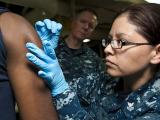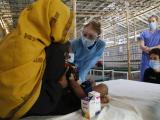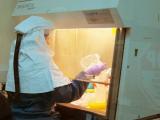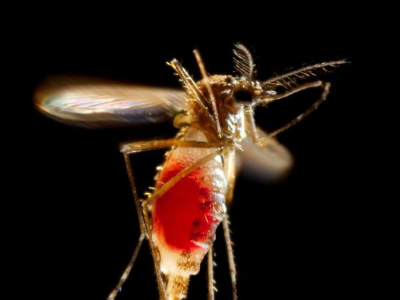Sep 11, 2008 (CIDRAP News) – Cross-contamination of clinical specimens in two Idaho hospital laboratories that were conducting proficiency tests triggered brief concern about a potential anthrax attack in 2006, underscoring the value of proper lab practices, according to a report from the Centers for Disease Control and Prevention (CDC).
Two clinical specimens from two different hospital labs were found on the same day to contain Bacillus anthracis. But both labs at the time were testing their ability to detect pathogens that bioterrorists might use, and the organisms turned out to be a nonvirulent anthrax strain used in those tests, according to the article in the Sep 12 Morbidity and Mortality Weekly Report.
"The two reports resulted briefly in alerts to the Federal Bureau of Investigation (FBI) and precautionary treatment of one of the patients for anthrax," the report says.
In one case, the Utah Public Health Laboratories (UPHL) detected B anthracis in a specimen that had initially been tested in a southern Idaho hospital lab. The hospital lab had sent the specimen, from a man who had suffered a dog bite, to a commercial lab, which ran morphologic tests and sent the sample on to the UPHL.
On Jul 18 the Utah lab determined that the sample contained B anthracis and notified the FBI and the Idaho Department of Health and Welfare of the finding, which led to notification of the patient and his healthcare provider.
However, direct fluorescent antibody (DFA) and polymerase chain reaction (PCR) tests by the Utah lab indicated the anthrax strain was nonvirulent. The UPHL sent a sample to the CDC, which determined on Jul 24 that the organism was the Sterne strain of B anthracis, a nonvirulent strain used in animal vaccines and lab proficiency tests.
In the second case, a hospital lab in another part of Idaho suspected anthrax in a specimen taken from a man who had an inflamed incision from hand surgery. The hospital sent the sample to the Idaho Bureau of Laboratories (IBL), which found an organism "phenotypically consistent" with B anthracis. DFA and PCR results, however, were the same as in the first case.
The IBL received the isolate Jul 18, the same day the Idaho health department was notified of the first case. "Because two possible anthrax cases had been reported on the same day, the possibility of a bioterrorist act was considered briefly; however, the PCR results of case 1 suggesting a Sterne strain made this possibility seem less likely," the report says.
The second patient's surgeon was informed of the anthrax test result and referred him to an infectious disease specialist, who started precautionary treatment for anthrax. Meanwhile, the state health department told the FBI about the case. The IBL conferred with the CDC and determined it was not necessary to send the isolate for further analysis.
A follow-up investigation revealed that the IBL had sent proficiency test samples containing the Sterne strain to the two hospital labs and other Idaho sentinel labs on Jul 12. In case 1, the hospital lab manager concluded that the patient specimen arrived and was set up for culture on the last day of work on the testing sample, but no other details were learned. In the second case, a hospital lab worker reported that the patient specimen and the proficiency sample were set up for culture in the same biosafety cabinet within minutes of each other.
The exact mechanism of cross-contamination could not be determined for either case, the report says. But investigators learned that the Sterne strain "was isolated from the patient specimens only after broth enrichment of wound specimens, a practice generally not considered appropriate for nonsterile sites such as wounds."
"This report underscores the need to use good laboratory practices to minimize cross-contamination of specimens during set up and analysis, not only when dealing with proficiency samples, but also during daily operation with patient specimens," the CDC states.
In addition, the report says that reference labs and epidemiologists should be notified when proficiency samples are being sent to sentinel labs in their areas. In particular, public health epidemiologists who monitor reportable diseases should be notified when lab proficiency testing is scheduled so they can be alert for potential cross-contamination, while maintaining vigilance for real biologic threats, the CDC advises.
CDC. Cross-contamination of clinical specimens with Bacillus anthracis during a laboratory proficiency test—Idaho, 2006. MMWR 2008 Sep 12;57(36):993-5 [Full text]


















